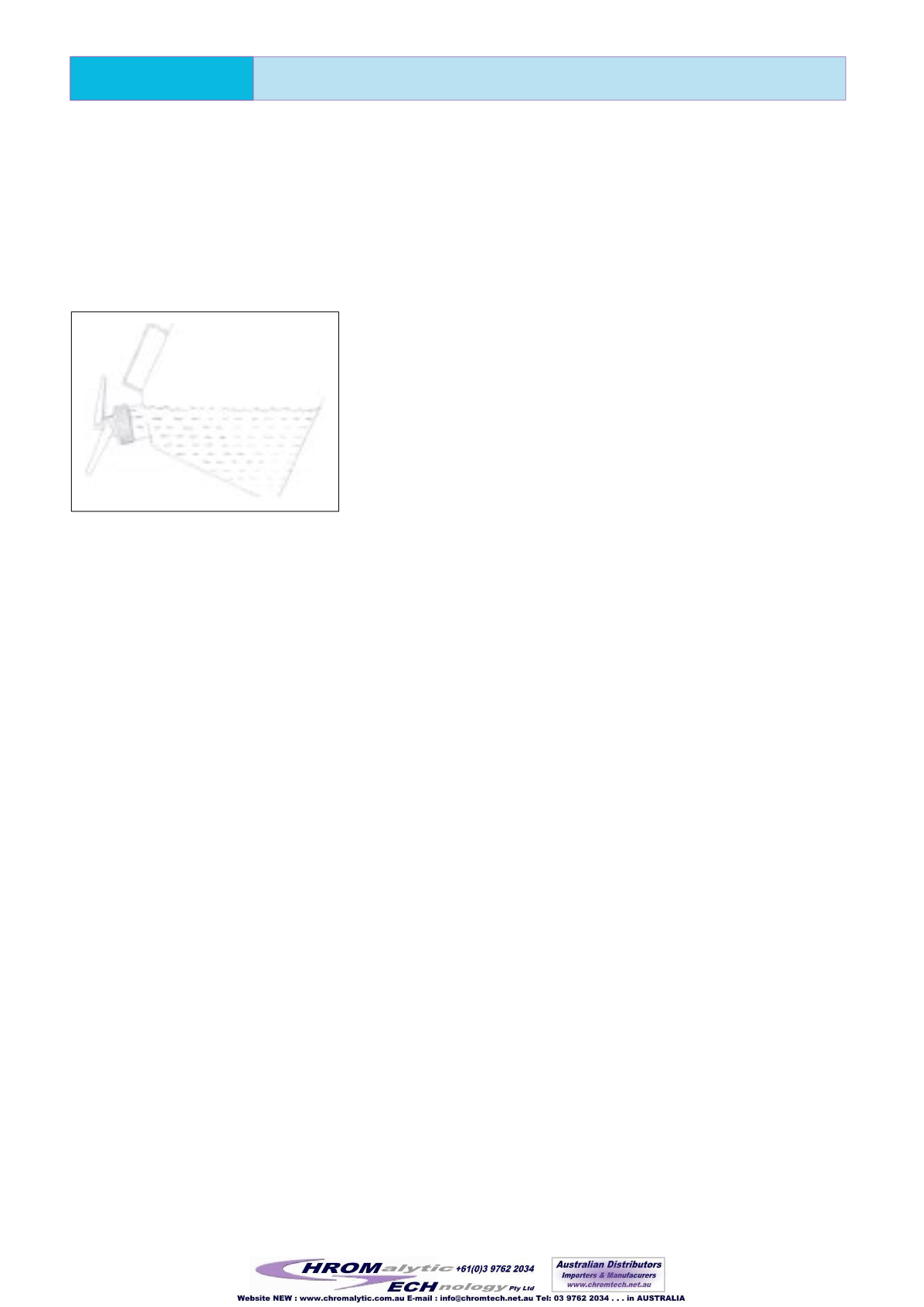
Product Information
SAETY CONTAINERS
In practise, mixtures or impure substances are often used. Small impurities may significantly affect the chemical risk
profile. Since the individual operating conditions are not known to us, the testing for chemical resistance of safety
containers and –funnels is the responsibility of the user and should always be ensured before using it.
Emptying:
When emptying containers air needs to flow into the container
while liquid flows out. Our safety containers ensure both takes place. When
using containers with self-closing metering device please note that the
container should be tilted only as much as shown in the illustration on the
left.
If the container is tilted too much (i.e. the metering device is completely
below the liquid level) air can not enter the container sufficiently and liquid
will flow only in erratic bursts.
For our safety containers with self-closing tap (from outside they look similar
Handling instructions:
to metering de-vices), air can enter through an additional ventilation screw on the container. The tap can be below
the liquid level without any problems. Therefore, safety canisters with a tap can perma-nently be stored horizontally, for
example in safety cabinets.
Avoid spilling:
Our safety containers are designed to offer a total volume greater than the denominated volume. This
additional filling space is important to serve as expansion space for filled substances in the event of significant
fluctuations in surrounding temperatures (e.g. when solvents stored outside in cold weather are transferred in a
building). Do not fill the container beyond the nominal vol-ume! The expansion space could otherwise be too small
and in extreme cases liquid could es-cape via the pressure control valve. If safety transportation containers are used,
additional haz-ardous goods regulations regarding filling limits might be applicable.
Cleaning:
If different substances should be used in the same safety container, it should be cleaned thor-oughly before
use. If undone, a mixture of different substances could cause uncontrolled chemi-cal reactions. Eventually a mixture
may arise, which might harm the container material. For cleaning, an in-depth rinsing is recommended. This may
include a sterilisation based on an autoclave process. To ensure the material used for the gaskets of the containers
(PTFE) is not affected, temperatures well above 200°C should be avoided. Generally, our products require little
maintenance. Nevertheless, it is important, to check tight-ness and operability of the containers in appropriate
intervals. E.g. the use of sticky substances could limit or impair the functioning of the gaskets or glue the flame trap.
Please take care that the substances you fill do not contain hard particles. They might be shut between the gaskets of
metering devices respectively taps and result in leakage. In most cases you can solve this easily. Please press the black
lever and flush the device thoroughly. If available, you can also use compressed air.
Maintenance and Repair:
Regular review of the container functions is inferred by the use of potentially explosive
liquids, the audit cycle – if not mandatory - should depend from the risk potential and intensity of use. Containers may
only be sent in for repair fully cleaned (inside and outside), as any residuals of flammable liquids would make welding
work impossible. Contaminated safety containers / -funnels must be cleaned at the expense of the sender.
If in individual cases parts are damaged, they may be sent in for repair (after cleaning). If you prefer to perform a
repair yourself, you should only use our original spare parts.
To avoid impact of extraneous rust do not use steel tools when working with stainless steel material!
MRC.3.14
284


